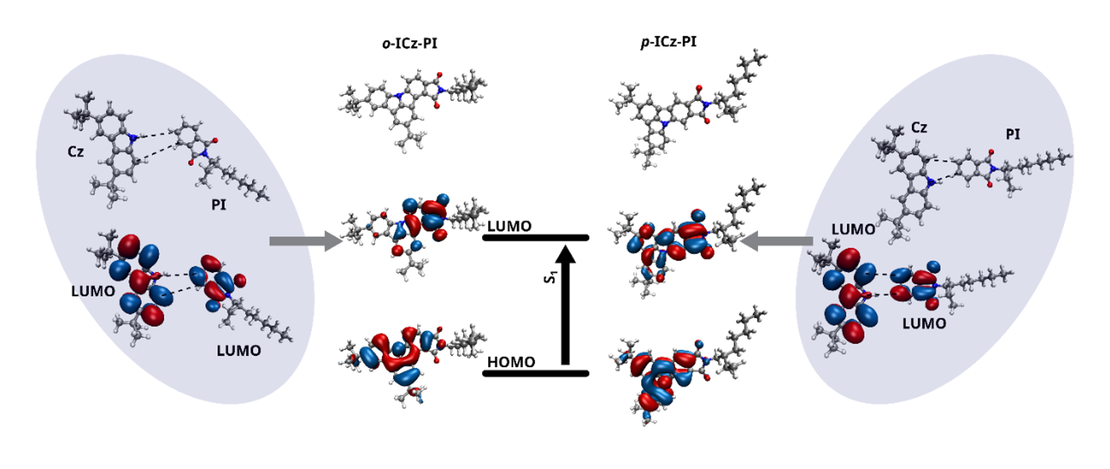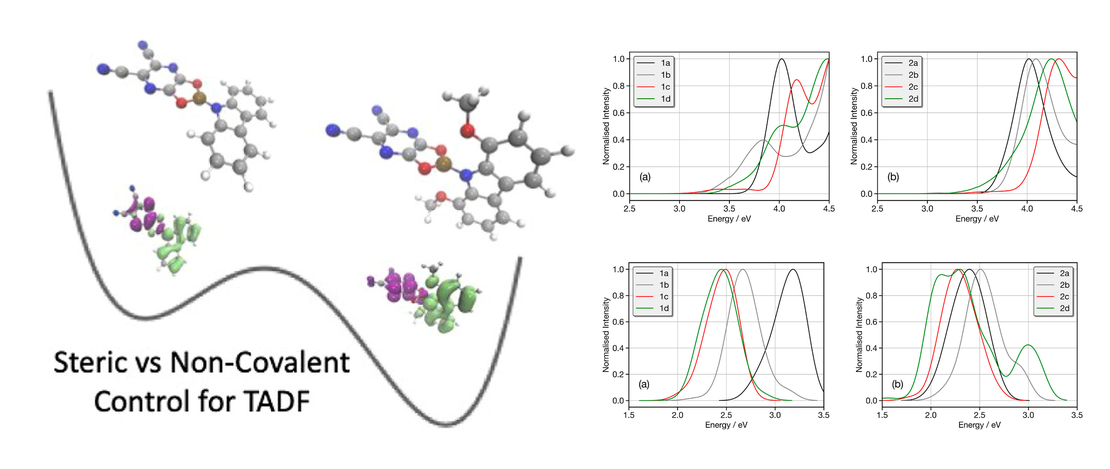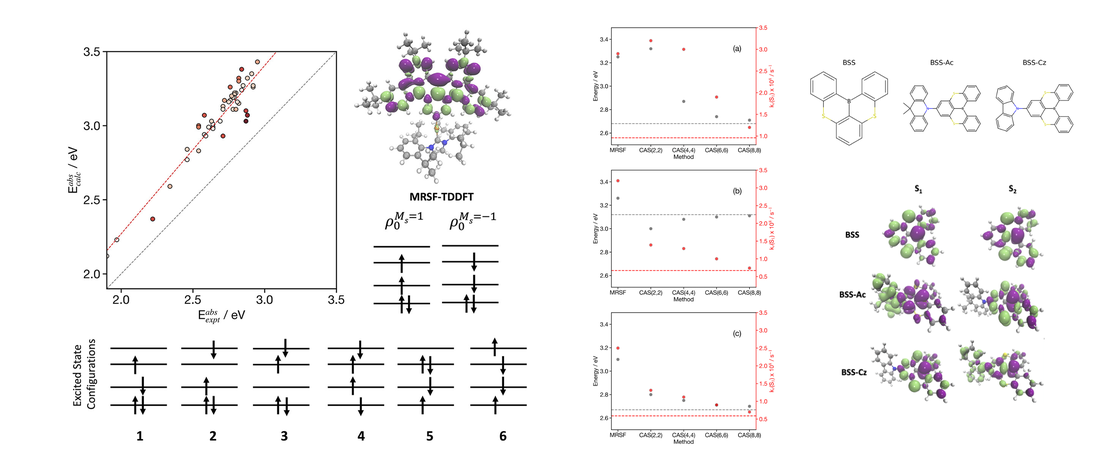
Rigid and planar π-conjugated molecules leading to long-lived intramolecular charge-transfer states exhibiting thermally activated delayed fluorescence
- Suman Kuila, Hector Miranda-Salinas, Julien Eng, Chunyong Li, Martin R. Bryce, Thomas J. Penfold and Andrew P. Monkman
- Publication
Intramolecular charge transfer (ICT) is a fundamental chemical process whereby excitation moves charge from an electron donor to an electron acceptor within the same molecule. Thermally activated delayed fluorescence (TADF) exploits the ICT property to harvest triplet excited states, leading to extensive optoelectronic applications, including OLEDs…
Read More
Conformational Control of Donor–Acceptor Molecules Using Non-covalent Interactions
Controlling the architecture of organic molecules is an important aspect in tuning the functional properties of components in organic electronics. For purely organic thermally activated delayed fluorescence (TADF) molecules, design is focused upon orthogonality orientated donor and acceptor units…
Read More
Towards the accurate simulation of multi-resonance emitters using mixed-reference spin-flip time-dependent density functional theory
Multi-resonant Thermally Activated Delayed Fluorescent (MR-TADF) materials have received significant research interest owing to their potential use as emitters in high-performance Organic Light Emitting Diodes (OLEDs). Despite their advantages, including narrow emission spectra leading to high colour purity, several challenges remain in optimising the performance of these materials…
Read More